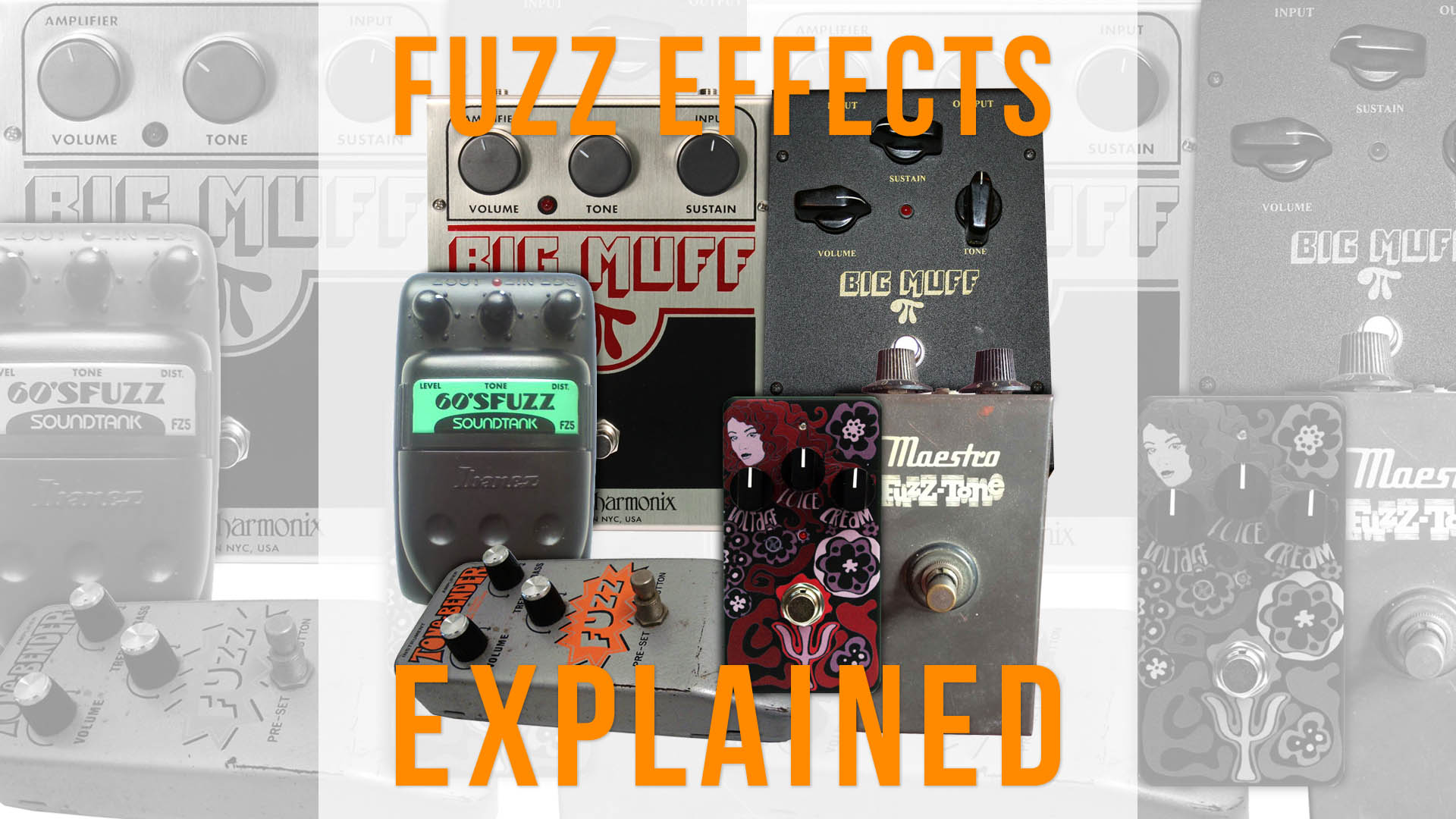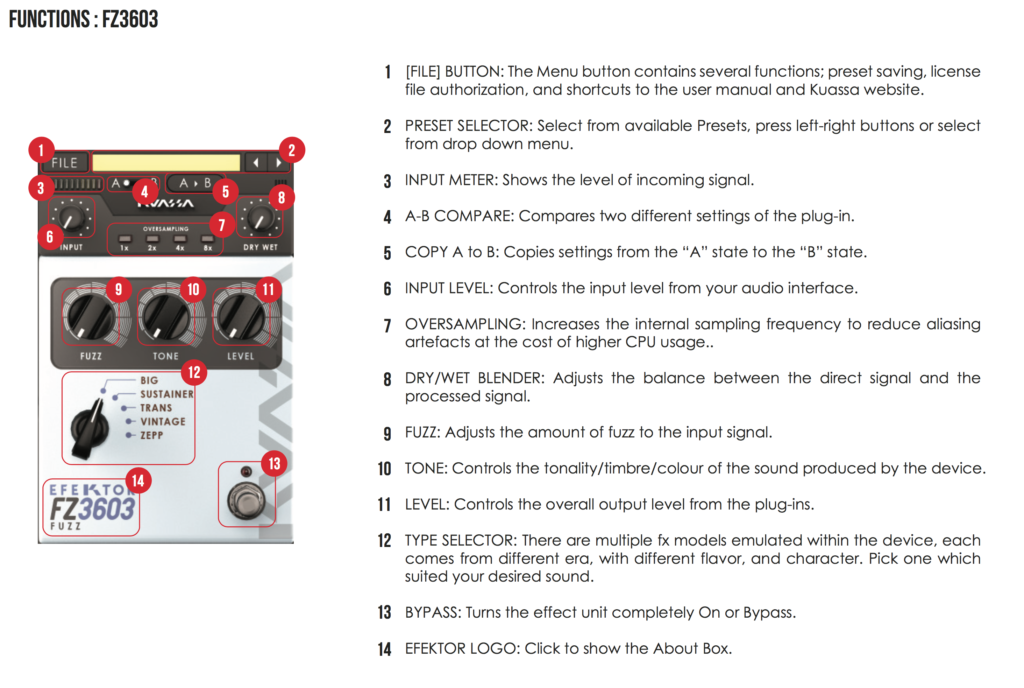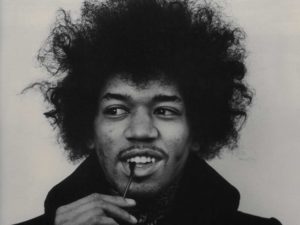
Texture wise, we can say that a nice “clean tone” feels like a model’s straight, silky hair after spa treatment, “overdriven tone” feels like the big hair that very model would have back in the 80’s. “Distorted tone” feels like a coarse stubble beard of her biker dad, while “Fuzz tone” sounds like… Fuzzy. As in a Fuzzy afro hair back in the 70’s, but a cool, style-defining style of Hendrix’ afro.
Okay maybe we tried too hard with the metaphors, but at least you get the picture. Remarkably at same time a fuzzy afro hair of Hendrix well-suited his signature guitar tone the best. As a true legend – His innovative approach to produce psychedelic tones screaming through his guitars has inspired many generations of guitarists.
History wise, one of the coolest story behind the first fuzz effect recorded in history was in 1960, a faulty pre-amp on the mixer console, made Grady Martin’s recorded bass guitar to sound distorted and fuzzy while the Nashville recording engineer Glen Snoddy find the tone phenomenal giving him an idea to replicate that tone. Then in 1962, he invented the box that came to be called the Maestro Fuzz-Tone, marketed by Gibson.
The Fuzz tone basically is a heavily saturated guitar signal, altering the sound to a plain square wave with amazing sustain .
 It’s using two, three or even more transistors to amplify the signal to a point where it starts to sound distorted, fuzzy with very long sustain.
It’s using two, three or even more transistors to amplify the signal to a point where it starts to sound distorted, fuzzy with very long sustain.
Later in the years, the germanium transistors used in the first models, were replaced by silicon ones, because of inconsistent production and faulty germanium transistors. Please also take a note that silicon transistors are giving more gain, but sound brighter than germanium ones.
Some of the best fuzzboxes:
The Tone Bender. Five years later, 1965 is the midst of UK rock scene. The British gives their answer to the American Maestro Fuzz-Tone through the hands of an electronics engineer called Gary Stewart Hurst. He designed the effect pedal with the name Tone Bender, based on germanium transistors, causing a fuzz craze across the country.
The first model – MKI, became one of the most used pedals among the artist like: Pete Townshend/The Who, Jeff Beck of The Yardbirds, and The Beatles amongst many.
Tonebender MK I in Yardbirds track, “Heart full of Soul”
Fuzz Face
Talking about Fuzz Face, the first song that comes to our mind is “Foxy Lady” song by Jimi Hendrix’s band; The Jimi Hendrix Experience. With their debut album “Are You Experienced” released in 1967.
There’s one story about young Jimi Hendrix saw Rolling Stones using Maestro Fuzz-Tone during their live shows, in love with the sound, then get the cheapest Fuzz-Tone clone instead called the Fuzz Face made by Iver Arbiter, an English Drummer who designed the Fuzz-Face to be simple in design and using only a few components to push the production cost as low as possible.
Although noisy and sometimes unreliable during his tour usage, Jimi and his tone placed an important milestone in the rock history, started the fuzz craze around the world.
Big Muff
Produced by Electro-Harmonix, Big Muff is one of the most used fuzz pedals with fat and big sounding. Quickly becoming a signature sound of many alternative rock bands during the 80s.
The Big Muff uses four transistors staged together and biased in way where the first one is a clean boost, the second one producing the distortion, and the last one is used to recover the volume loss during the hard clipping stage.
“Cherub Rock” by Smashing Pumpkins is an amazing representation of the sound of this iconic pedal.
Introducing Efektor FZ3603 Fuzz
 The newly released FZ3603 Fuzz plug-ins collect the exceptional fuzz stompboxes in the history, then narrowed down to the best ones to provide you the best fuzzy tones around. There’s 5 types of Fuzz, and each one have their own character from different era.
The newly released FZ3603 Fuzz plug-ins collect the exceptional fuzz stompboxes in the history, then narrowed down to the best ones to provide you the best fuzzy tones around. There’s 5 types of Fuzz, and each one have their own character from different era.
This FZ3603 Fuzz plug-in can be described as the grandfather of ‘artificial’ effect units. Recognizable from its distinct sound, heavily clipped and compressed to the point where the waveform is squared, adding harsh and complex harmonics and inharmonics, almost synth like. You can select from five models of fuzzboxes:
- Big Fuzz: the gritty and wooly sustaining note
- Sustainer Fuzz: blistering rhythm and singing leads
- Trans Fuzz: the familiar fuzzy transistor sound
- Vintage Fuzz: modern recreation of the sound from the 60s
- Zepp Fuzz: the vintage british rock sound
Efektor FZ3603 Fuzz plug-in is now available to purchase via our website and selected resellers for an intro price at $19 (excl. VAT) each and the bundle of all three, namely Efektor Distortion Bundle will be available at more reduced price during intro: $45 (excl. VAT) for one month after release (normal price: $25 each, $59 bundle). Intro price valid until August 15th, 2017.
Rack Extension version is also having a discount and (now) a bundle version of all three also at intro price same with the Plug-in version. Available through Propellerhead Shop.





